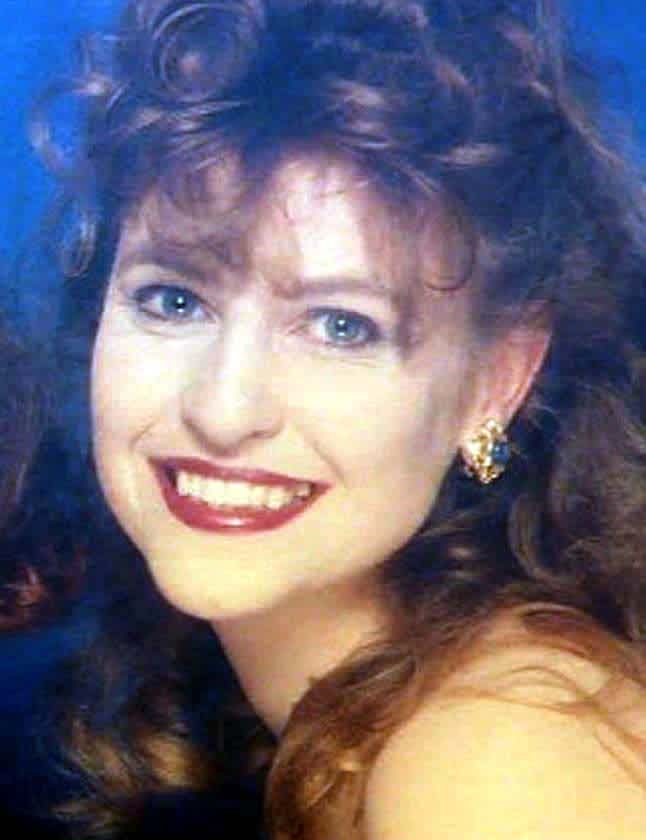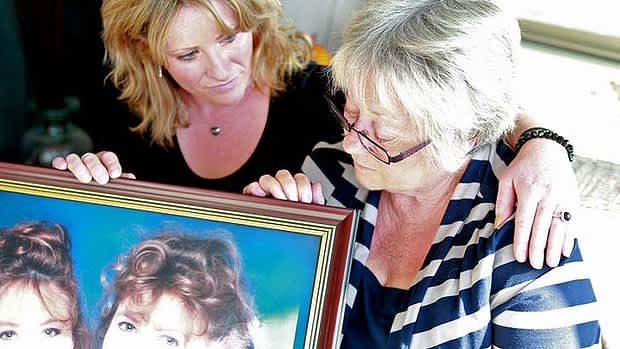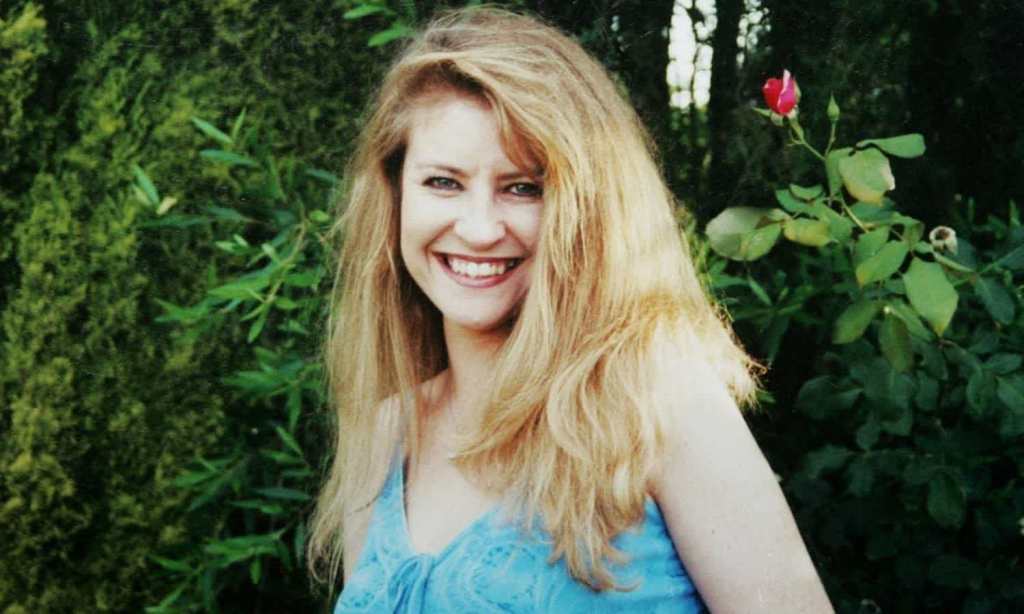In December 2001, on a rain-soaked night, Janine Vaughan went missing in Bathurst NSW.
Her disappearance, more than nineteen years ago, has never been solved and her family is still searching for answers.
Vaughan, 31 at the time, was out clubbing with friends before ending her night just before 4am, by getting into a car outside Bathurst’s Metro Tavern.
A new podcast, hosted by award winning journalist Hedley Thomas called The Night Driver has been released by The Australian and delves into her disappearance.
In an interview with Sky News, Thomas called the case a “mystifying whodunnit”.
“There were originally more than 40 persons of interest, there was hardly any evidence left behind, no crime scene, no body and nothing in the way of forensic material,” he said.
“Our hope is that 19 years later, by going back through everything and talking to friends, family, people who were with her that night, someone’s got to give up their secret, a pretty wicked secret that’s been kept all this time.”
The podcast will shed light on “prominent local identities” and a local town full of “innuendo, gossip and people pointing the finger.”
Before you listen to the podcast, here’s what we already know about the disappearance of Janine Vaughan.
The Disappearance of Janine Vaughan
According to the Australian Missing Persons Register, Janine Vaughan was 164cm tall, with green eyes and thin build.
On December 7 2001, the 31-year-old vanished after last being seen around 4am in Keppel Street, Bathurst, NSW.
At the time, security footage showed her getting into the front passenger seat of a bright red four-door medium-size sedan similar to a Mitsubishi Magna or a Toyota Camry.
Vaughan has not been seen or heard from since.
The eldest of four children, Vaughan was a menswear shop manager originally from Muswellbrook in the Hunter Valley.
According to her best friend Rebecca Medhurst in an interview with The Sun Herald six months after her disappearance, Vaughan had a wide network of friends and Medhurst was certain that she would not get into a car with someone she didn’t know.
“Everyone knew her through work or through her wide range of friends,” she told the outlet. “I know she wouldn’t have gotten into the car with a stranger, which means I probably know them as well, through her or a mutual friend, and that makes it so much worse, to think that it’s someone connected with me. I think that someone out there must know more than they’re letting on.”
Local police commenced an investigation into her disappearance before the case was referred to the State Crime Command’s Homicide Squad.
On June 1 2002, police searched a number of areas around Mount Panorama, searching 30 hectares of bush, using dog squads, divers and 60 State Emergency Service workers.
At the time, police interviewed more than 1,000 people and by 2003 she was presumed dead. That same year, homicide detectives released a home video of Vaughan at a family christening two weeks before she disappeared in the hopes someone would come forward, however, no one ever did.
In May 2007, another massive ground search took place in Bathurst with the addition of a special task force, Strikeforce Mountbatten, that included specialist cadaver-sniffer dogs trained to hunt for human remains.
During their hunt, bones were discovered near the Macquarie River, however, forensic analysis of bones discovered indicated they were more than likely those of an animal.
The search was a result of new information supplied to Crime Stoppers over a period of six months and also resulted in a 2006 Police Integrity Commission Investigation (PIC) into the role a local policeman, Brad Hoseman, may have had in the case. He was forced to leave the force and denied any involvement.

Former detective Hoseman had initially told police he was staying at his mother’s house near Newcastle when Vaughan disappeared, however, during the PIC, he admitted he had been in Bathurst. He admitted he couldn’t say with certainty if had been in Newcastle as he was going off a bank statement which placed him in Wyong on December 7.
In 2008, it was announced by NSW Police that a $100,000 reward was being offered, this was later raised to $1,000,000.
In June 2009, the coroner re-traced her last known movements, dimming lighting along the street to recreate what it would have looked like.
The inquest also heard from her family and friends who claimed Vaughan had seen Hoseman walk past the shop where she worked and would wave at her.
According to Detective Inspector Peter Houlihan, several witnessed had recalled she had expressed concerns about Hoseman’s actions towards her, however, the inquest found no link between her disappearance and the former officer.
During the same inquest, a security guard of Bathurst’s Metro Tavern, Barry Gale, had said he had a heard a man talking about how he had recently killed someone, however, when questioned if he knew the man, Gale said no.
The inquest also heard that another woman, Lynette Borland, had been staked by a man in a car similar to the one Vaughan got into — while she couldn’t remember the make or model of the car, she was able to give a brief description of the driver.
In September 2009, Vaughan’s former partner, Phillip Evans (whom she had been in a relationship with for five years until 2000), told the court that she had been stalked by someone who left notes, flowers and lingerie on her car while she worked.
According to The Herald, one of the notes said: “Don’t be scared of me. I don’t want to hurt you. I just want to get to know you. I will be in touch.”

And then came a random “kill confession”
Coroner Mary Jerram heard from 12 witnesses during the investigation, including an acquaintance of Denis Briggs, who was formally identified as a person of interest, Peter Barker.
He told the coroner that Briggs had confessed to Vaughan’s murder, saying his “eyes were fixed … like he was reliving something” but then later he told him he was “making it up” and that “he was only joking”.
According to Briggs’ former partner, Julie Creave — who also testified, she knew he hadn’t been taking his medication for bipolar disorder.
On September 21, 2009, after 10 days of evidence over two hearings, Coroner Jerram ruled that Vaughan was murdered by an unidentified person.
During the final week of the inquest, Vaughan’s brother, Adam Vaughan told media:
“I think it’s a little bit more tough this time,” he said. “We know that it’s going to be all over and we won’t be coming back so hopefully something may come out while we [are] here, but everybody seems to keep together and … this town holds a lot of secrets and we would hopefully like them to share them, but we don’t really know.”
The family initiated their own investigation and a woman came forward about a bag she had found two years after Vaughan’s disappearance in a drain near The Scots School, Bathurst, which contained documents relating to Vaughan inside, however, it vanished without a trace.
In 2011, a skeleton was discovered near Bathhurst however, they were not those of Vaughan, with tests showing they belonged to a male.
That same year, the PIC was forced to apologise for investigating Hoseman and according to The Daily Telegraph, “PIC Inspector Peter Moss QC has found that the PIC ‘abrogated its responsibilities’ to conduct a fair and impartial investigation and had engaged in a ‘reprehensible’ course of conduct, skewing evidence to fit the conclusions it wanted to come to.”
In 2012, Vaughan’s case was referred to the unsolved homicide team for a full review, however, to this day, she has never been found.
A new taskforce, Strike Force Toko II is urging anyone with any information to contact Crimestoppers on 1800 333 000 or via the website.
The $1 million reward is still available for information that leads to the arrest and conviction of the person or people responsible for Vaughan’s death.







